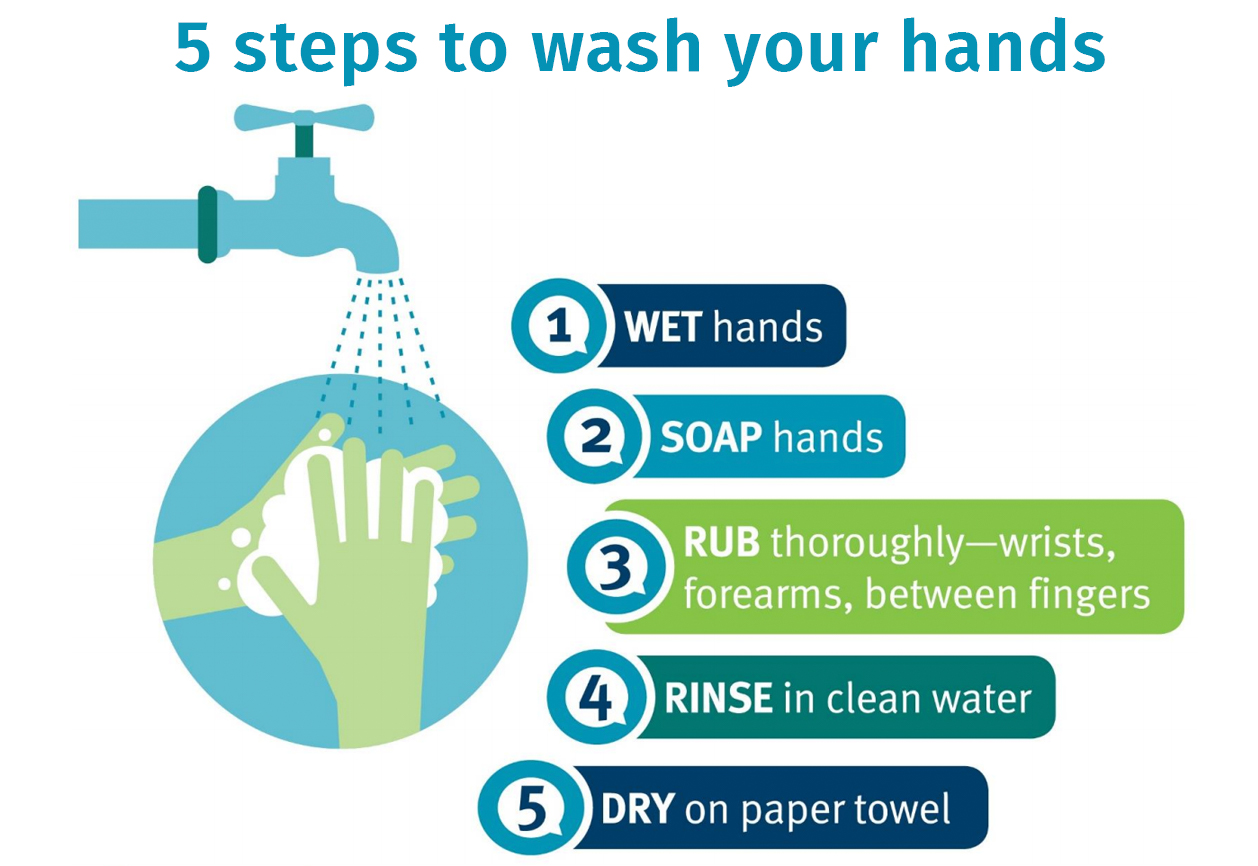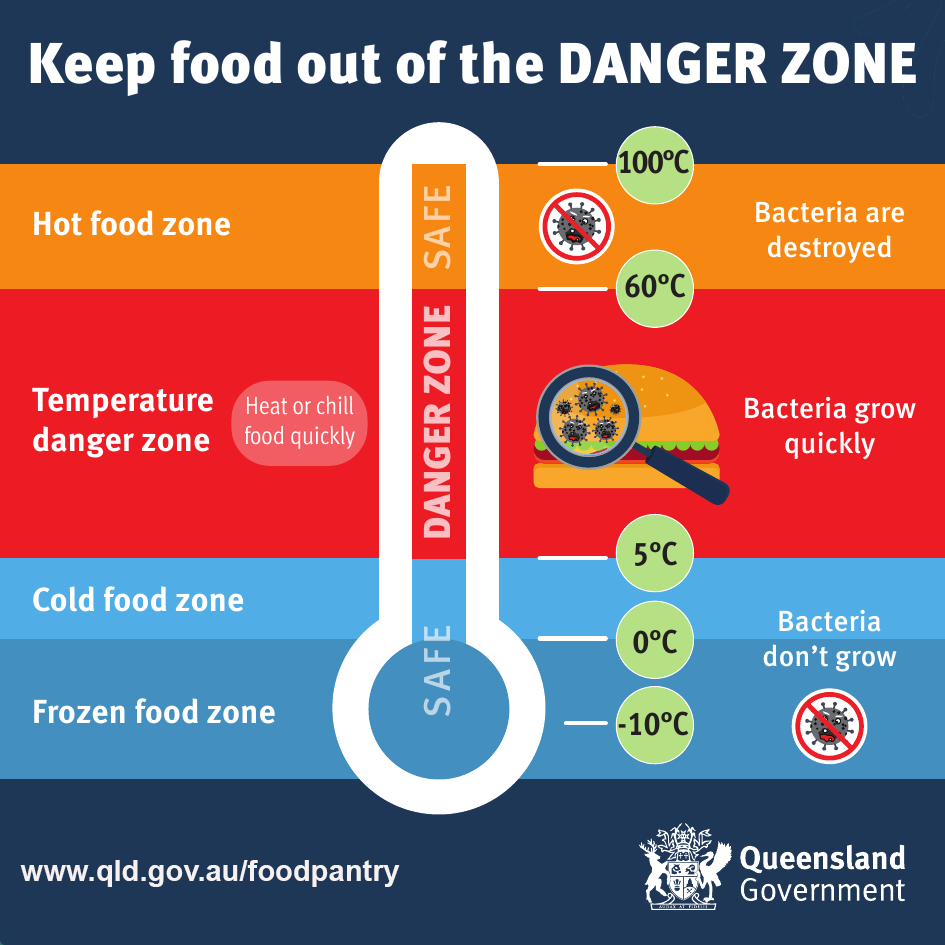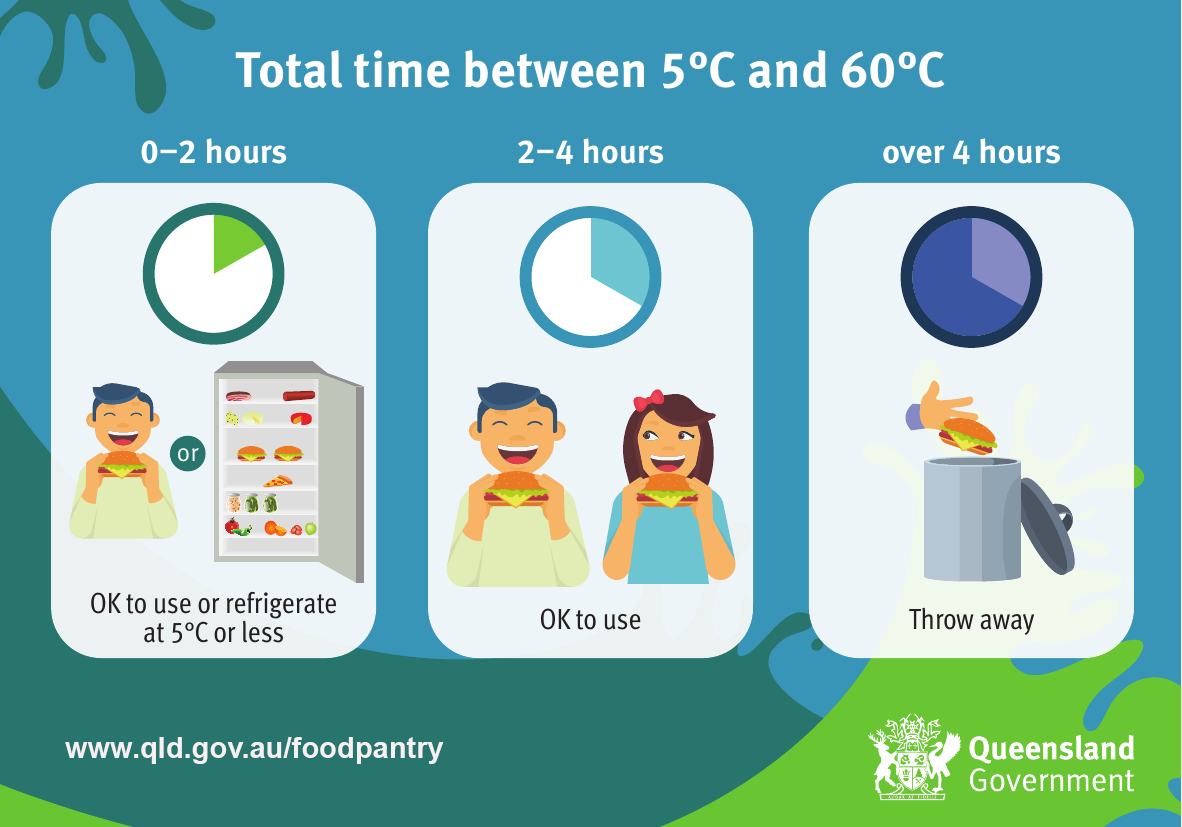Preventing food poisoning
Preparing and cooking food properly helps you prevent food poisoning. Food poisoning can make you seriously ill, and can be fatal in some cases.
Washing your hands
To reduce the risk of food contamination:
- wash your hands and fingernails thoroughly with warm running water and soap after
- coughing, sneezing or smoking
- using a handkerchief or tissue
- visiting the toilet
- handling rubbish
- touching animals
- handling chemicals (e.g. cleaning materials)
- handling raw meat, particularly before handling cooked food or food to be eaten raw
- touching hair, scalp or a body opening
- dry your hands thoroughly
- cover cuts and infections on your hands.

Handling food safely
Follow these simple food handling tips to reduce the risk of food poisoning:
- avoid handling food when you are unwell
- make sure all food used is fresh and within the use‐by date
- look for signs of potentially unsafe food
- raw meats, poultry and seafood should be kept covered and separated from cooked foods and ready-to-eat foods to avoid cross contamination
- put food in the refrigerator in closed containers or covered with plastic wrap to reduce the risk of cross contamination
- use clean utensils, plates or containers to prevent contaminating cooked food or food that will be eaten raw
- use clean equipment, rather than hands, to pick up food
- wear clean clothes or a clean apron
- wash fruit and vegetables to be eaten raw under running water
- cook food thoroughly, especially minced meat, burger patties, sausages, rolled roasts, stuffed meats, rabbit, seafood, poultry and eggs
- eat any leftovers within 2 days
- reheat leftovers till they are steaming hot
Hot food
To prevent food poisoning from hot food:
- make sure hot foods are hot (above 60°C)
- keep food at 60ºC or above until served
- refrigerate or freeze food that is to be prepared well in advance and reheat to steaming hot before serving.
You should
- place hot food in the refrigerator once it has stopped steaming. Food should be cooled from 60°C to 21°C within 2 hours and from 21°C to 5°C within a further 4 hours.
- divide large quantities of food into small, shallow containers for faster cooling
- reheat as quickly as possible until steaming hot
- cook or reheat packaged food according to any directions on the label.

Cold food
To prevent food poisoning from cold food:
- take cold groceries home to the refrigerator as quickly as possible
- store cold food at 5ºC or below
- make sure cold foods are kept cold (below 5°C)
- keep chilled and frozen food cold (e.g. in an insulated bag or with ice) if it will be a long time before it can be placed in a refrigerator or freezer
- thaw frozen food in the refrigerator or microwave, not on the kitchen bench
- do not refreeze food after it has been thawed
- store and handle cold food according to any directions on the label
- check the temperature of the refrigerator regularly.

Cleaning
When washing plates and cooking equipment:
- scrape and rinse off surface food
- wash in clean, hot, soapy water
- rinse in clean water
- let dishes air-dry, where possible
- use only a clean, dry tea towel if drying immediately
- don't use tea towels for drying hands that have been used for dishes.
Pest control and animals
Reduce the risk posed by pests and animals by:
- storing food safely in sealed containers
- stopping pests coming into the area where food is kept
- not leaving food or dirty dishes out on benches and keeping the kitchen clean
- keeping animals out of the kitchen.
More information
Read more about:


